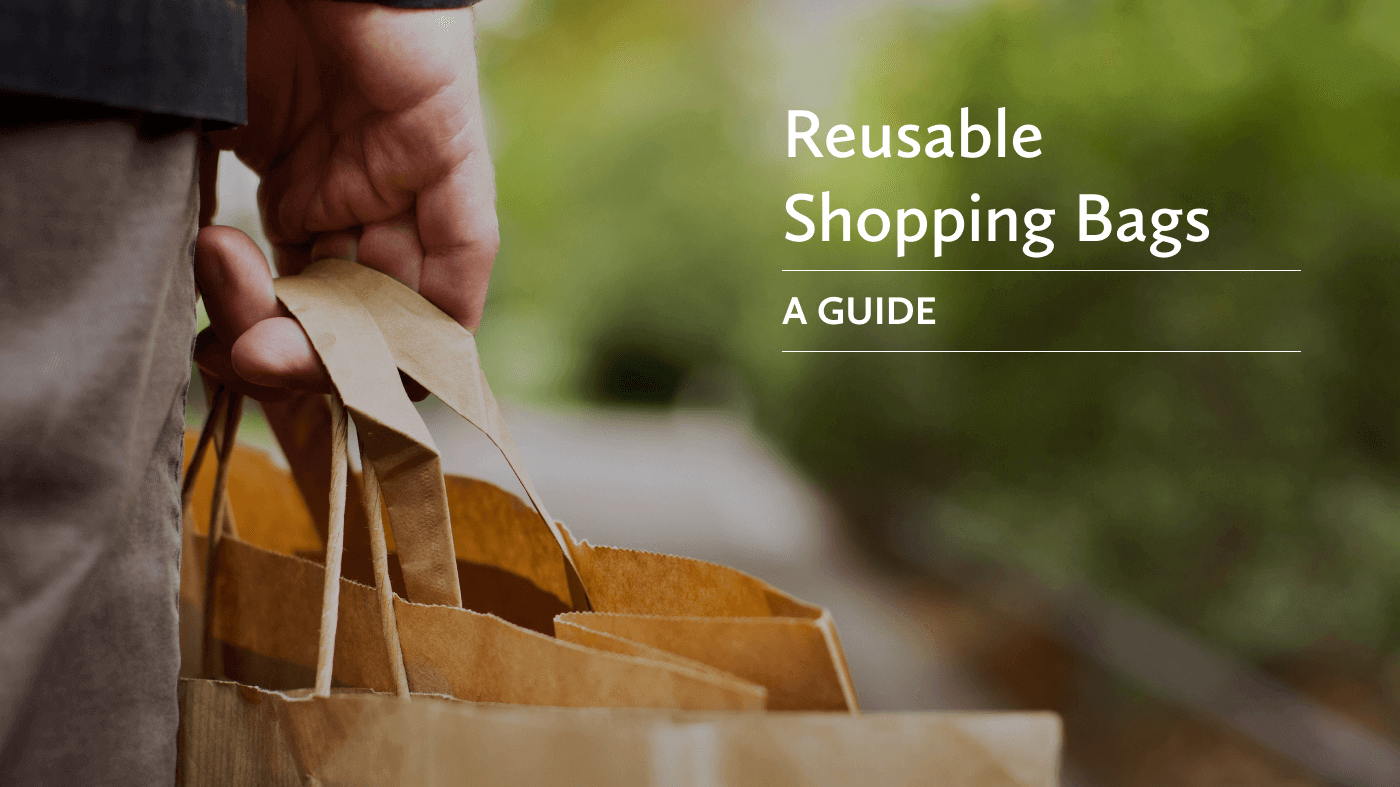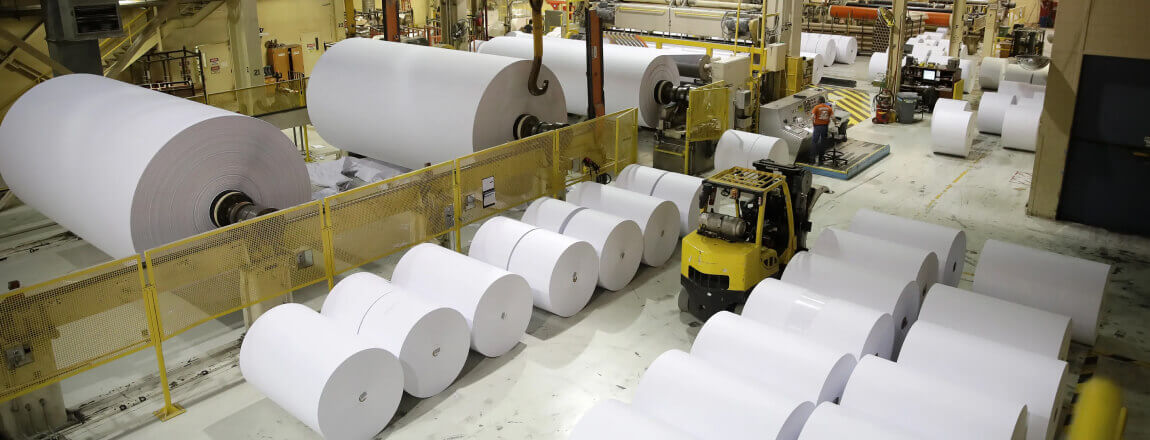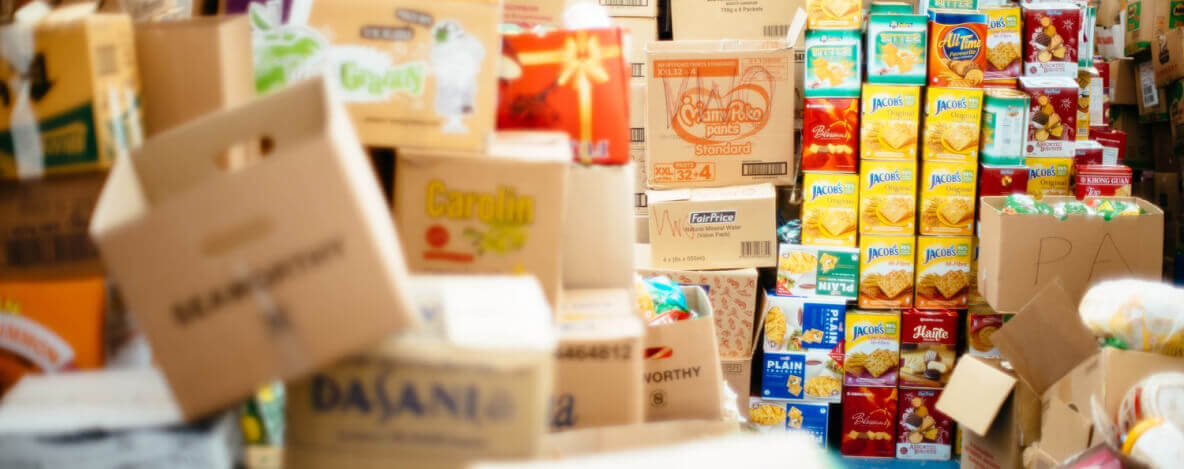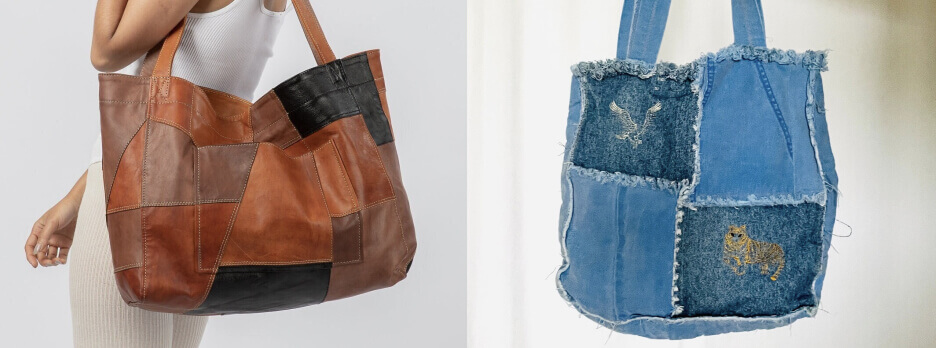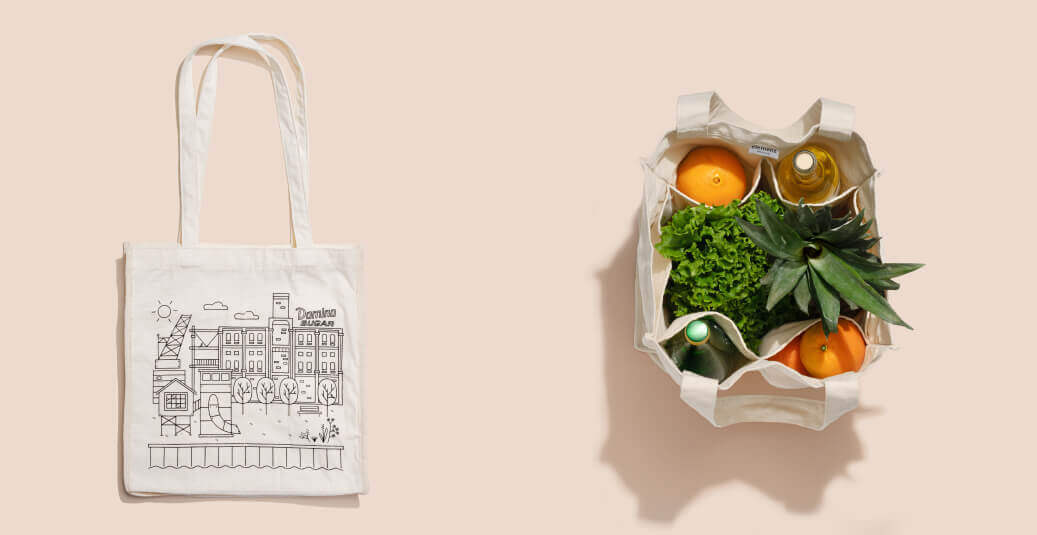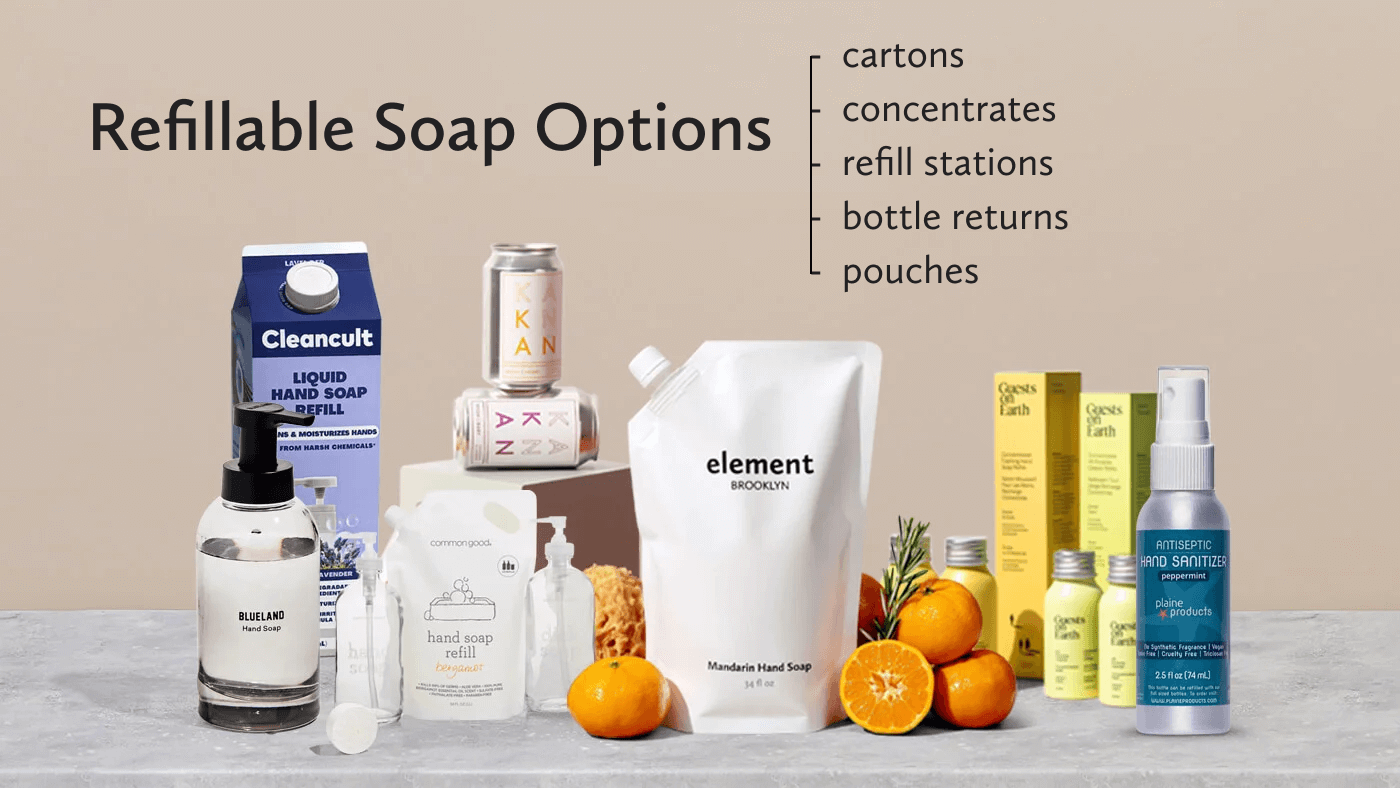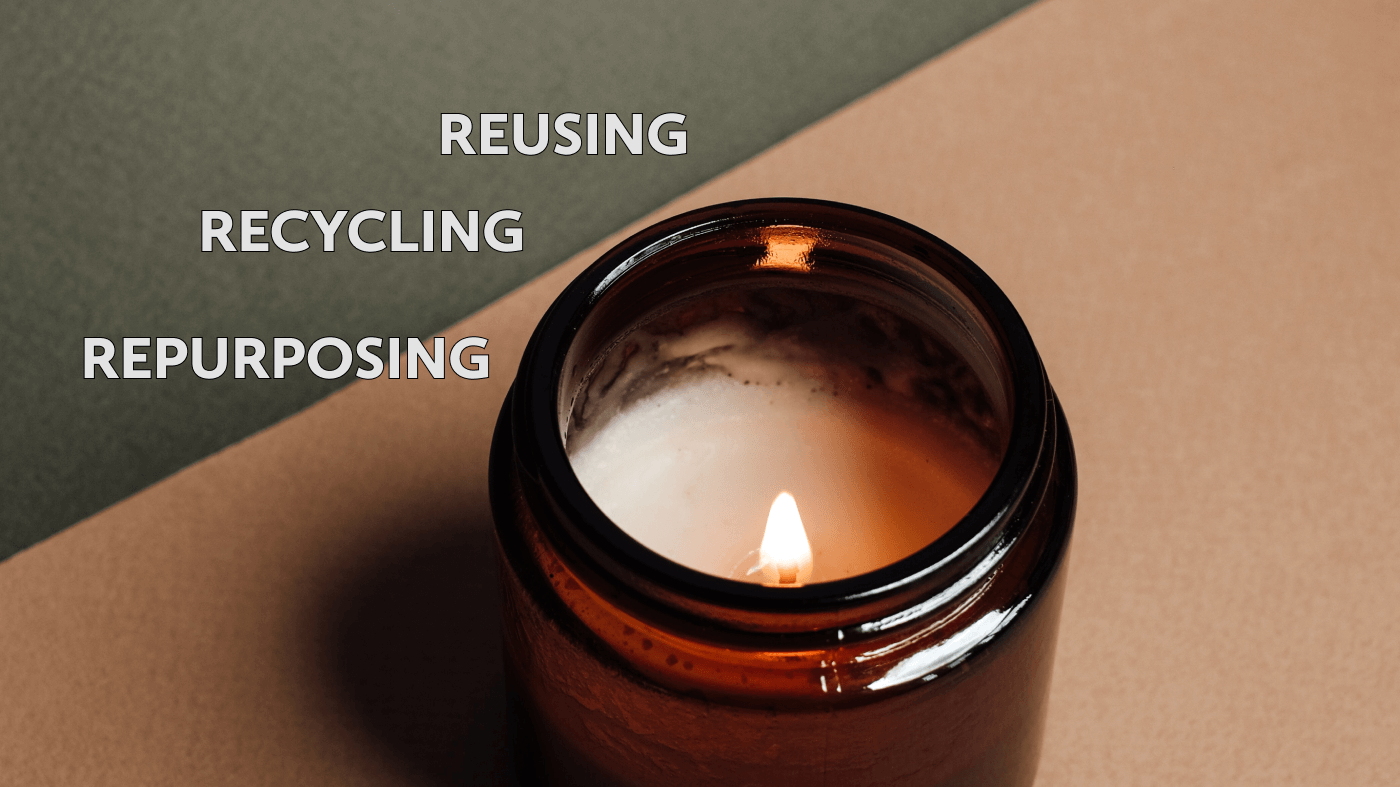The numbers are staggering: an estimated five trillion plastic bags are produced worldwide each year (yes, trillion), and in the United States, approximately 500 billion plastic bags are thrown away. From the grocery store, take-out restaurants, clothing departments, gas stations, home improvement stores — you name it — cashiers are trained to place your purchases in a plastic bag. The practice has been become ingrained in modern culture, but as we become more aware of the damaging effects of plastic on our environment, many states and local municipalities have begun to ban single-use plastics bags, and consumers are seeking out alternative options.
As many shoppers switch to paper and reusable bags, it’s important to note that not all shopping bags are the same, and some options are more sustainable than others. The devil is in the details, so when considering the many types of grocery bags on the market, which are the better options?
Clear plastic shopping bags
Although plastic shopping bags are typically recyclable, they are only very rarely actually recycled. Photo: Herald Sun
First, let’s look at a classic, virgin plastic grocery bag, which is often made of HDPE plastic (#2), a completely recyclable type of plastic. This sounds great, but plastic bags are not accepted in curbside recycling bins because they can get caught in separation equipment and any contaminates are difficult to remove. As a result, only about five percent of plastic bags in the United States are recycled and 10 percent are incinerated, leaving an abysmal 85 percent headed to a landfill (or ending up in our waterways). However, they don’t have to! Many grocery store chains (including Target, Walmart, Winn Dixie, and Publix), offer drop boxes right out front to recycle plastic grocery bags (and other plastics).
The end-of-life of the plastic bag is not the only part of its life cycle to consider. Manufacturing the bags first requires extracting raw materials like crude oil and refining it. Surprisingly, the process to produce one plastic bag releases fewer greenhouse gases and uses less water than other options – but this doesn’t factor in the impact of the bag after the consumer is done with it, or the immediate damage caused to a natural habitat by drilling into the earth.
Paper bags
Paper shopping bags might seem like a better alternative, but making them is environmentally costly. Photo: The Post-Crescent
Back in the old days, using paper bags was commonplace in grocery stores, but they all but disappeared in the 80s when plastic bags hit the market. Paper bags are seeing a resurgence and have many advantages: they’re compostable and are often accepted for curbside recycling programs (if they’re free of contaminants). Paper isn’t exactly eco-friendly though, and in the United States alone, 14 million trees are cut down annually to make shopping bags that are often used only once.
Deforestation isn’t the only issue: manufacturing a paper bag requires the same carbon footprint as driving a car about 17 miles and uses twice the energy to make as a plastic bag and five times the amount of water. If you’re using paper bags, try to get ones made from 100 percent (or a high percentage) of recycled materials and reuse them whenever possible.
Non-woven polypropylene bags
NWPP bags are an affordable option and are a good choice if you're planning on reusing them several times. Photo: HuaHao
You’ll probably recognize non-woven polypropylene (NWPP) shopping bags as the inexpensive reusable bags at the check-out aisle (often with the grocery store’s logo on them). They’re made from a non-woven plastic textile (polypropylene) that’s created by heating and spinning the plastic and have the feel of a lightweight canvas. These are often offered at a low cost, enticing shoppers who forget their reusable bags at home.
While this sounds like a good option, the problem is, this often that leads to excessive purchasing of reusable bags, and because they are made with plastic, they are not biodegradable. Although the bags are durable and washable, they run the risk of shedding microplastics, tiny particles that pollute our waterways. Technically, non-woven bags are recyclable (plastic #5), but in practice, many recycling centers may not accept them.
Although the environmental impacts of production are more than single-use plastic bags, it’s estimated that it only takes 11 uses to level the playing field with classic plastic bags. Overall, non-woven bags are one of the better choices if they are purchased sparingly, reused frequently, and recycled properly.
Cardboard boxes
Consider using cardboard boxes (often available for free at stores that sell a lot of produce) for your shopping. Photo: Happy Hearts
In the era of online shopping, chances are you may have a stash of cardboard boxes from Amazon or other online retailers, but before you break them down for recycling, consider taking them with you to the grocery store.
Although many budget grocery store chains charge extra for shopping bags, they often have a collection of boxes in the front of the store (leftovers from truck deliveries) that customers can use. The drawback of cardboard is the boxes can be bulky to store in your home, but if you’ve got the space, reusing existing cardboard boxes is an excellent alternative to buying new shopping bags.
Bamboo bags
Making bags out of bamboo sounds eco-friendly, but is it? Photo: Custom Grocery Bags
Bamboo has been labeled as an eco-friendly material, and when it comes to bamboo toothbrushes, hairbrushes, and other items made from sustainably harvested bamboo, it is. Bamboo is a rapidly growing grass that absorbs carbon dioxide and has been viewed as a better choice than plastic or wood.
However, when it comes to bamboo fabrics, this is not the case. Manufacturing these textiles involves extracting the cellulose from bamboo pulp, and most bamboo fabrics are actually viscose, a semi-synthetic material generated from a method that relies heavily on toxic chemicals. Although the bamboo materials are biodegradable at the end of life, the manufacturing uses significant amounts of energy, making this a less-than-ideal choice in a reusable bag.
Hemp totes
Hemp has a variety of uses! When it comes to making tote bags, it's a great choice as it uses less resources than cotton.
Hemp fabric is an extremely sustainable option for reusable shopping bags, although it’s not as widely used because the fiber come from cannabis sativa, a plant that’s highly regulated. Hemp uses significantly less water than manufacturing cotton, does not require pesticides, and is fully biodegradable. Hemp plants are also carbon sinks that absorb large amounts of CO2 from the atmosphere.
Plus, it’s extremely durable, meaning there’s minimal risk of your groceries spilling out onto the pavement. One drawback is that hemp has a rougher texture, so synthetic materials may be used to soften it, and due to its odor, it's often treated with bleach (or other chemicals). Organic hemp shopping bags tend to be on the pricier side, but if you’re willing to make the investment, they can be a great option.
DIY and upcycled shopping bags
Two examples of bags made from other materials, both available on Etsy: left, leather tote; right, denim tote.
It’s estimated that 85 percent of textile waste goes to landfills, so another shopping bag alternative (if you’re crafty) is to make your own reusable bags from leftover scrap fabrics. Using existing materials rather than buying new is always a better choice, and there are loads of creative, reusable shopping bags on the market that are made from upcycled materials. Etsy is a great place to search for totes made from recycled plastic bottles, dog food bags, or even pool floats.
Cotton tote bags
Our very own cotton canvas totes, which come with side pockets that everyone seems to love.
Cotton is made from natural, renewable materials, allowing it to biodegrade in about five months — where plastic can remain for hundreds of years. While many believe that cotton totes are the best option, creating cotton canvas requires a tremendous amount of water and produces significantly more waste during production than one classic HDPE plastic bag.
However, the sticking point is that consumers use their durable cotton tote bags multiple times for things other than groceries, where most single-use plastic grocery store bags have a lifespan of about 12 minutes (in fact, the average family uses about 1,500 plastic bags per year).
If you plan to use and reuse your cotton tote bags to help offset environmental costs (it takes hundreds of uses to do so), Element Brooklyn’s organic cotton canvas tote is a heavy-duty work horse that’s designed to withstand everyday wear and tear. It’s also built with side pockets (great for wine bottles), and can also be used as a grocery bag, shower bag, or beach bag.
Final thoughts
Whatever refillable hand soap option you choose, it’s another forward step in your sustainability journey. Rethinking how we shop for everyday products can help to shift the narrative, so our society becomes more focused on reducing the production of new materials by reusing what we already have.
